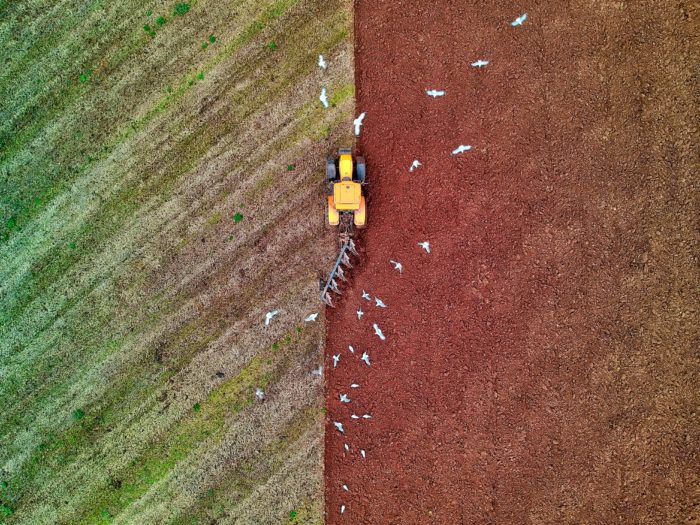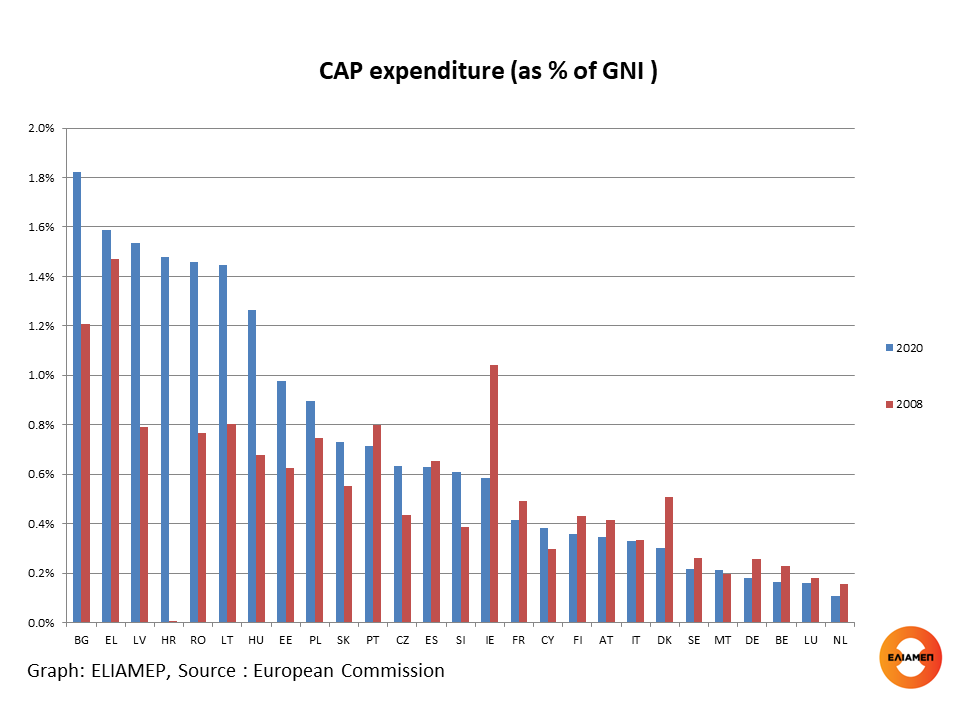The Common Agricultural Policy was the EU’s first supranational policy, and for years the largest part of the Union’s budget went to Agriculture. For this reason, the CAP’s expenditure is the subject of confrontation and conflicts between member states, but also the subject of trade disputes between the EU and third countries.
From 1970 until today, however, there have been dramatic changes both in the EU and in the specific weight of agriculture within national economies. That is why the agricultural policy of the EU has been reformed many times: the latest reform concerns the period 2023-2027. Specifically, the original objectives of the CAP have changed significantly as they now focus on broader environmental issues, attracting new farmers, rural development, and consumer protection. An important change is the gradual shift from price support (which distorted the market for agricultural products and led to artificial surpluses) to income support for farmers.
CAP reforms and the emphasis of other EU policies have significantly reduced the expenditure of CAP as a share of the EU budget over the past 40 years: from 65.5% in 1980 to slightly less than 25% in 2021. In the new Multiannual Financial Framework (2021-2027) CAP expenditure reached 387 billion (in current prices), while in the period 2014-2020 it was 408 billion (also in current prices).
In general, each country’s share of total CAP expenditure is positively associated to its contribution to the EU’s total agricultural product (see relevant ELIAMEP study). However, some Member States receive more than they contribute to the EU’s total output of the agricultural ‘industry’. Greece also one of them: participation in CAP expenditure was 5.0% while its contribution to the total agricultural output of the EU was 2.9% in 2020. Many new member states (Poland, Romania, Hungary, and Bulgaria) also benefit from the CAP.
The largest part of CAP expenditure goes to France (9.4 billion in 2020, or 17.3% of the total), Spain comes second (6.9 billion) and Germany third (6.3 billion). Greece is in 7th place (2.7 billion in 2020, or 5.0% of the total).
In relative terms, as a percentage of Gross National Income, the ranking of Member States in terms of EU funds that go to agriculture is quite different than in absolute terms. As the graph illustrates, in 2020 Bulgaria was in first place (1.8% of GNI), followed by Greece (1.6%), Latvia and Croatia (1.5%). France was in 16th place (0.4% of GNI), with the Netherlands (0.1%) in bottom 27th place).
In 2008, Greece was first in the ranking (1.5% of GNI), followed by Bulgaria (1.2%) and Ireland (1.0%). It should be noted that Ireland used to receive the highest CAP expenditure per capita. After Greece joined the then European Economic Community in 1981, Greece’s CAP expenditure per capita was initially only one eighth of Ireland’s per capita expenditure. With the “Integrated Mediterranean Programmes”, CAP expenditure per capita increased significantly for Greece.
Although the CAP does not receive the same support as in the past, the fact that the sector employs 22 million people in the EU means that the political stakes are still high. The new CAP, which entered into force on 1 January 2023, will be the subject of the next In focus.




